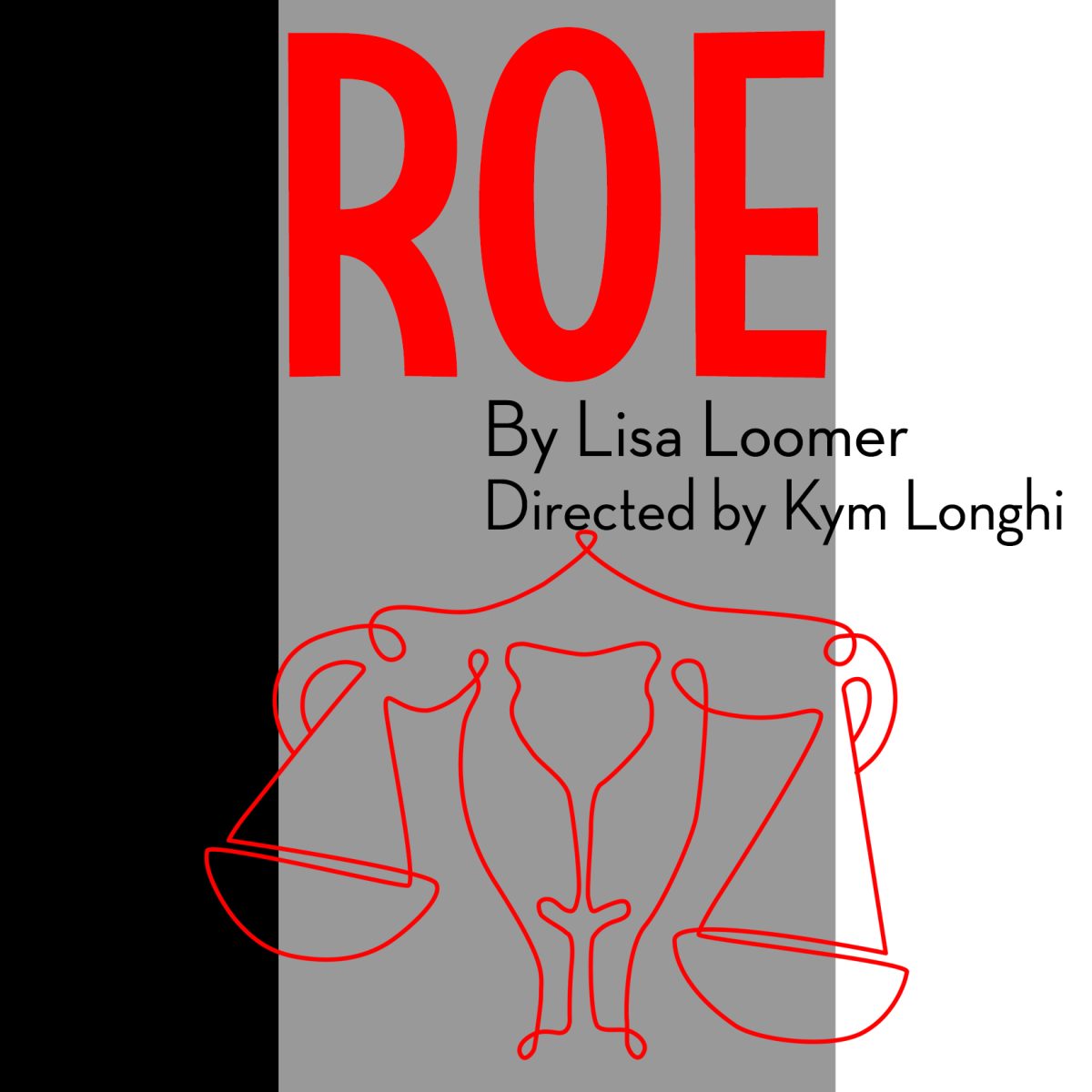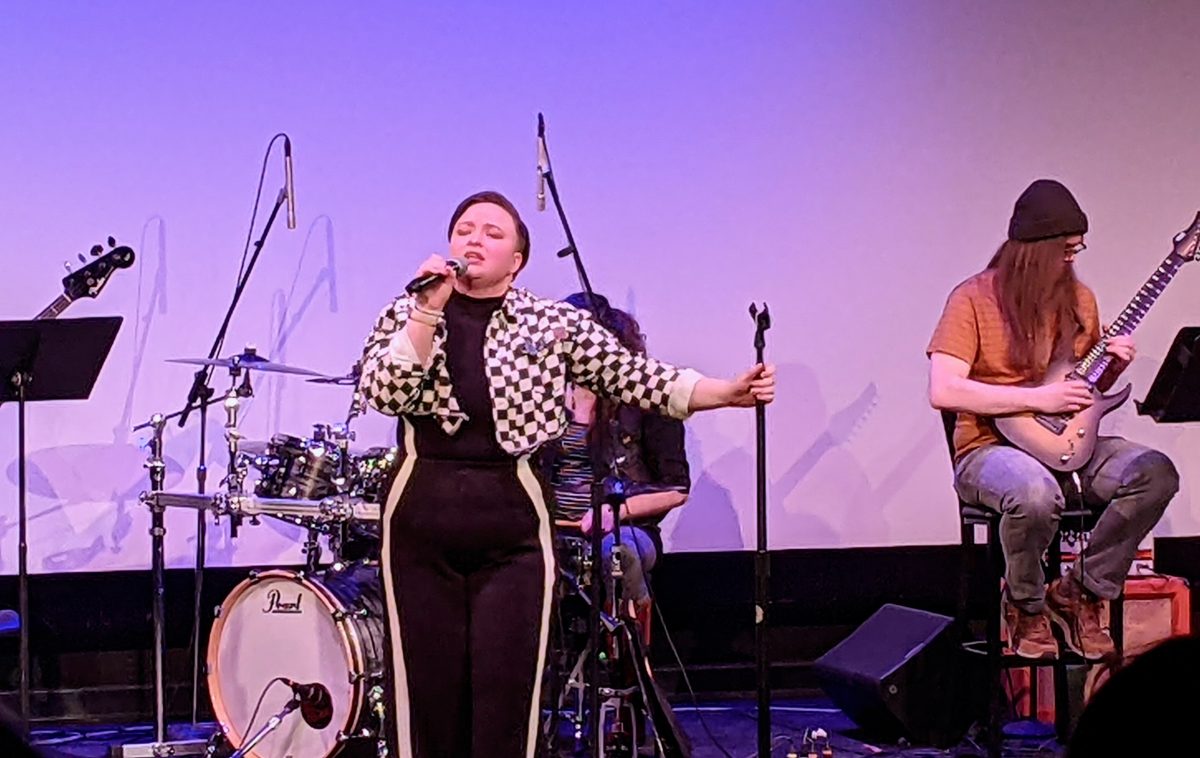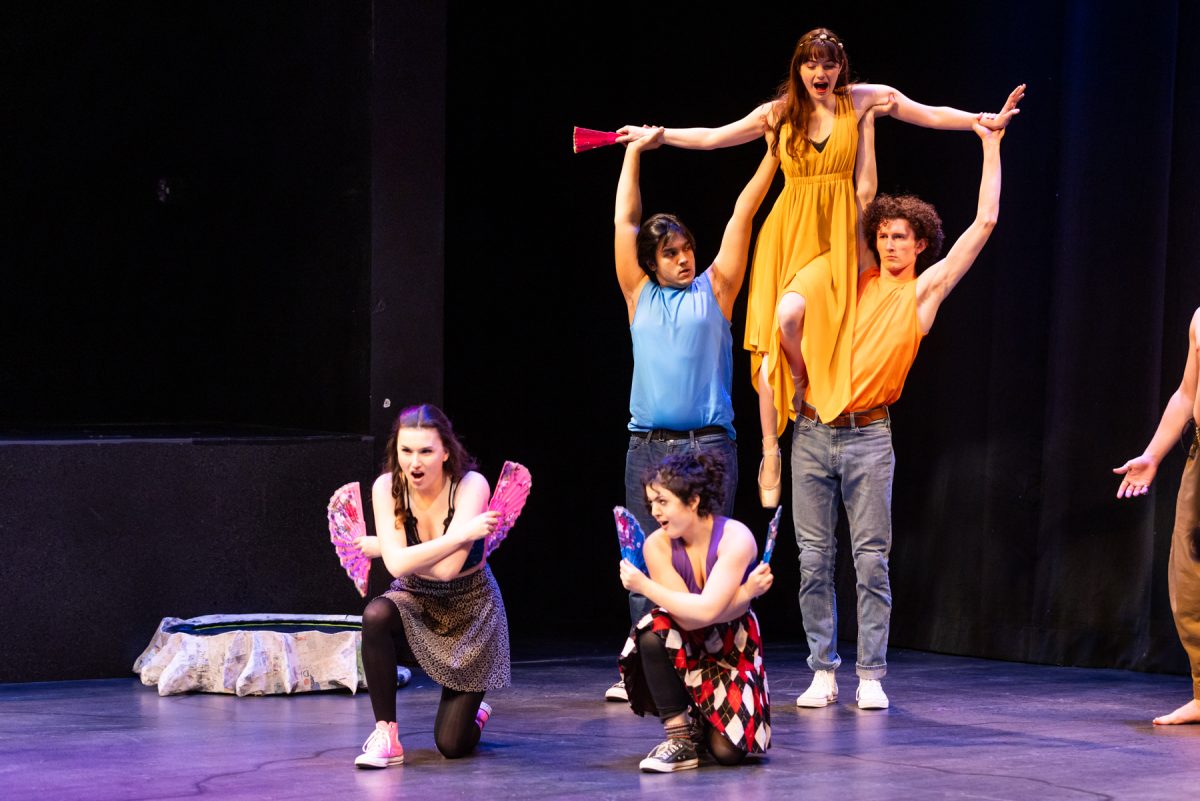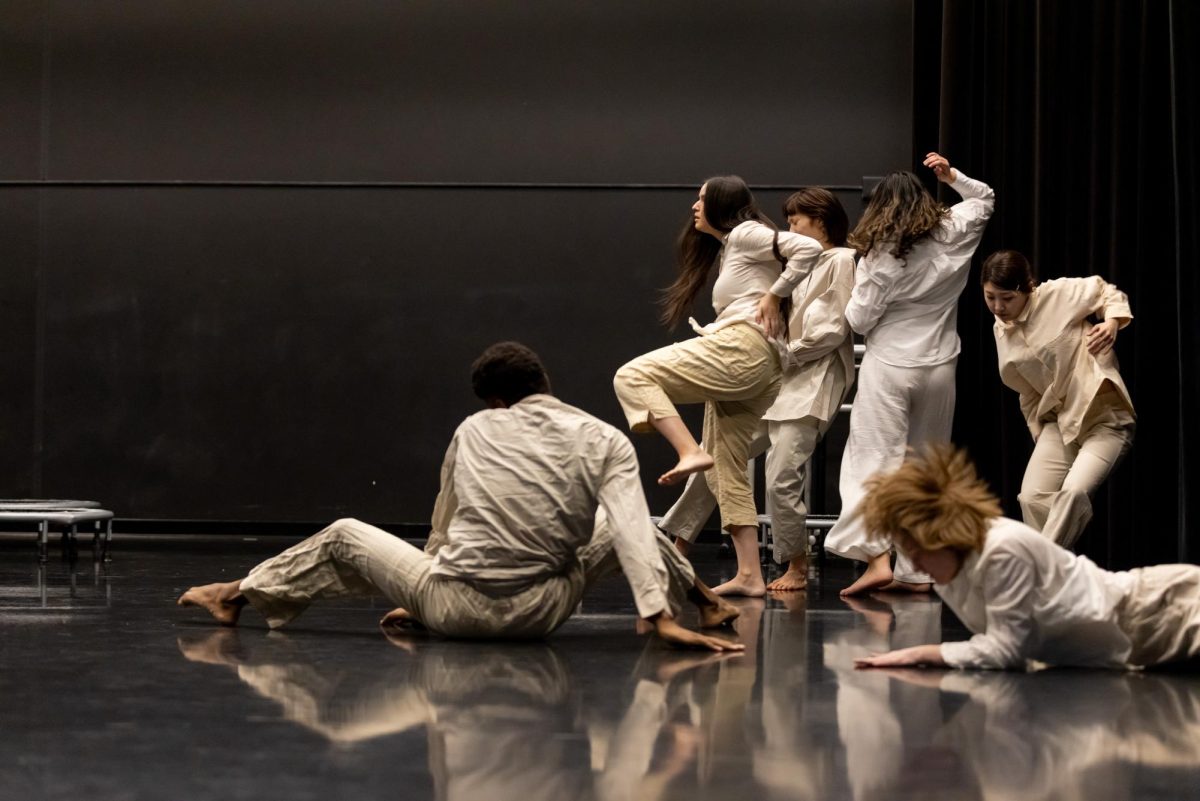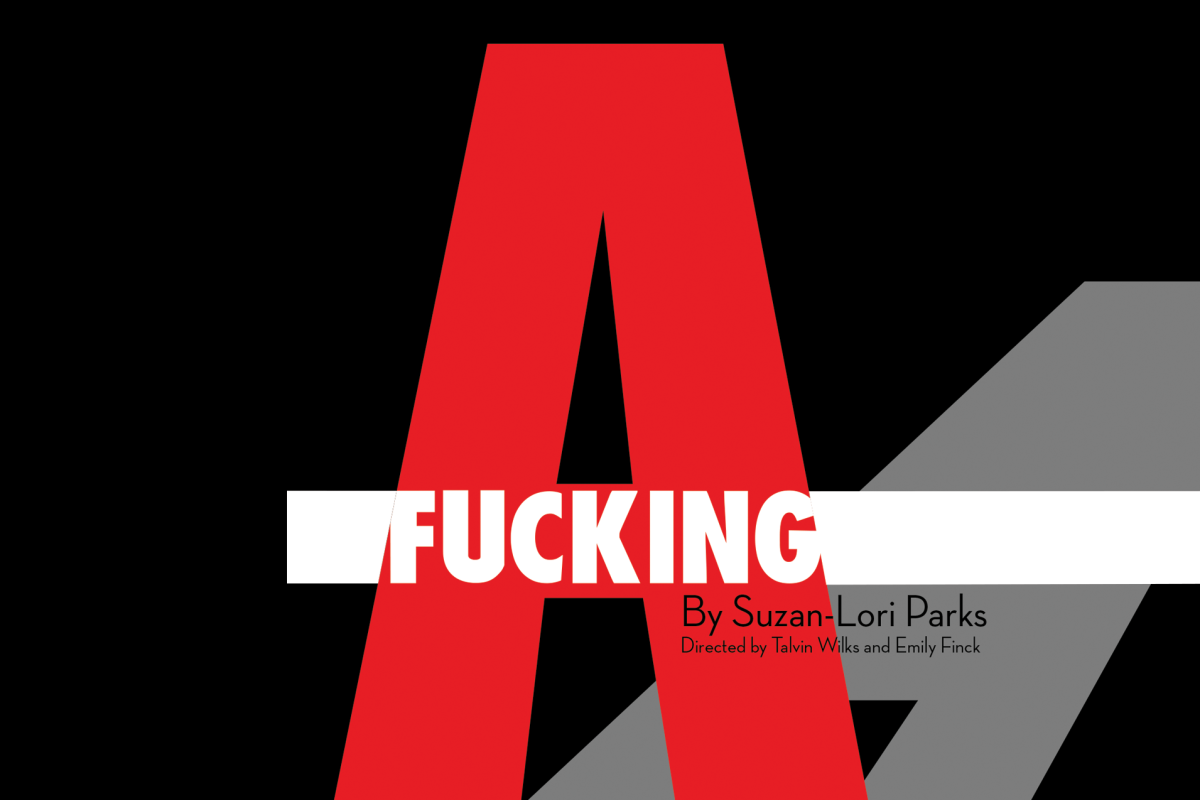Sugar Plum Fairies and Swan Lakes once dominated the psychic pastures of dance theater, encapsulating the attributes of a utopian world that never really was, but at least pretended otherwise.
WHEN: Thursday through Saturday at 8 p.m., Sunday at 7 p.m.
WHERE: Southern Theater, 1420 Washington Ave., S., Minneapolis
TICKETS: $18
Contact: (612) 340-1725
Web site: www.southerntheater.org
Escapism, however, is but a temporary elixir. In the midst of globalization, those imagined lands of milk and honey have become fruitless, shriveled-up fields. As a result, the dancing bodies that respond to them are more apt to find themselves sloshing about the putrid crevices of a landfill shantytown in Manila, Phillipines, or wading their way through a backdrop of alkaline biohazards on an urban superblock. Because life, for many, is just that.
In “Pipaashaa,” (the Bengali word for “extreme thirst”) the dancers convulse and twitch; they flail their arms. They crawl and moan and make harsh exhalations beneath a filthy artificial sky that changes from hues of bloodstained melon to sickly seafoam algae. Squares of black tissue soot scatter about under stomping feet. They entangle their flesh in plastic particles. The narrative is grossly delineated, incomplete, perfect.
“In our bodies there are these histories,” explained Ananya Chatterjea, artistic director of Ananya Dance Theatre and associate professor of Theatre Arts and Dance at the University.
And these histories, according to Chatterjea, map out a realm of unrest, of polluted bodies, of industrialization, of land toxicity, and of a world on fire.
Ananya Dance Theatre is an artistic community of women of color that combine elements of classical Odissi Indian dance with aesthetic traditions of Bengal and street theater. In “Pipaashaa,” like in their previous productions, the dancers carve out for themselves a space onstage in which art, dance and social activism can all breathe and coexist together.
“We respond with movement,” Chatterjea explains of the relationship between the Ananya community and their commitment to social and environmental justice. “That becomes the process.”
In “Pipaashaa,” 17 dancers dressed in flowing, iridescent wraps and tank tops with blood-colored water drops on the front weave and sputter on and off the stage. In one scene, half of them squirm around in industrial-strength plastic wrap. They resemble chunky, unstable organisms weeping and whirling among the sonic land mines of industrial capitalism. Then they recognize suspicious gunk on their bodies. Frantically, they try to strip and pull and yank it off. In all their laughing and delirium, they flop like dying fish on the stage floor, all the while maintaining their highly skilled repertoires and intricacy of pose.
Chatterjea, in one chilling scene, brilliantly illuminates the plight of a mother acting out the acute disposition of a body riddled with contaminants. Her hollow eyeballs dart around the theater in a frenzy of paranoia. She starts moving to the sounds of drills and cranes, unaware or indifferent to her child, who is begging for comfort at her feet. Like a zombie, she shifts her body to the sound of steel machines and industrial drone.
One of the most ingenious elements of “Pipaashaa” comes in the form of its minimalist soundscape – an unsettling orchestra of mechanical miscellany, from the beeping of a truck backing up to clanging metal to static drones and low moaning.
The performance excels at capturing the sentiments of environmental injustice, something the dancers won’t let you forget. After all, “Pipaashaa,” according to Chatterjea, is an artistic response to those gnawing injustices the powers-that-be would rather sweep under the rug.
Chatterjea witnessed firsthand the environmental impact of globalization on human populations during her travels throughout Asia.
“I heard of farmers committing suicide because Coca-Cola was taking all their water,” she explained.
Then in 2004, dangerous traces of arsenic were found in soil samples all over the Phillips neighborhood, the poorest borough in south Minneapolis. Suddenly, for Chatterjea, that ideological gray matter that usually provides a cushion between local and global politics collapsed in on itself.
Together with activists, colleagues and leaders from the Women’s Environmental Institute, Chatterjea and Ananya Dance Theatre began conducting research and holding workshops – “Madness Workshops,” as Chatterjea refers to them – to better understand the effects of pollution and contamination on struggling populations, from Bangladesh to our own backyard. Then, she did the thing she knew how to do best: dance.
“Dance is such a powerful medium,” explains Chatterjea. “And that’s all I really have.”
So interpret “Pipaashaa” as a cautionary tale. View it as a site of protest and resistance. Engage with it because it hurts, it festers, it wreaks havoc.
But mostly, appreciate its ability to convey, through the act of a distressed, dancing body, the importance of home, even in its most putrid state.











